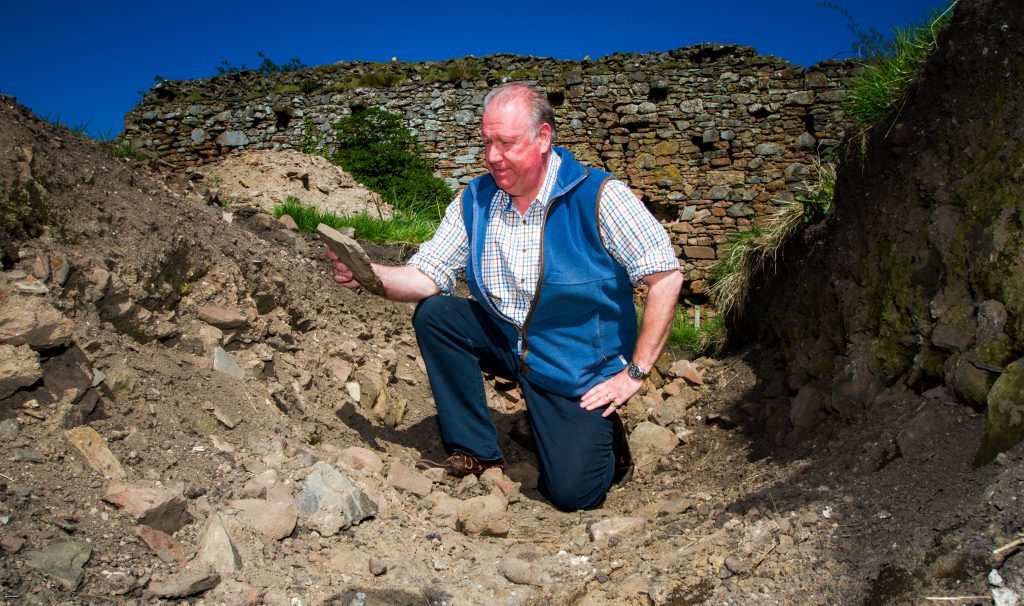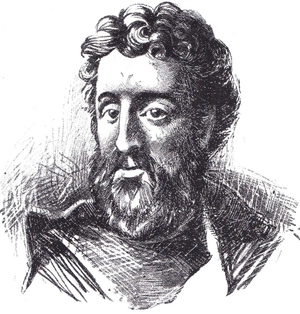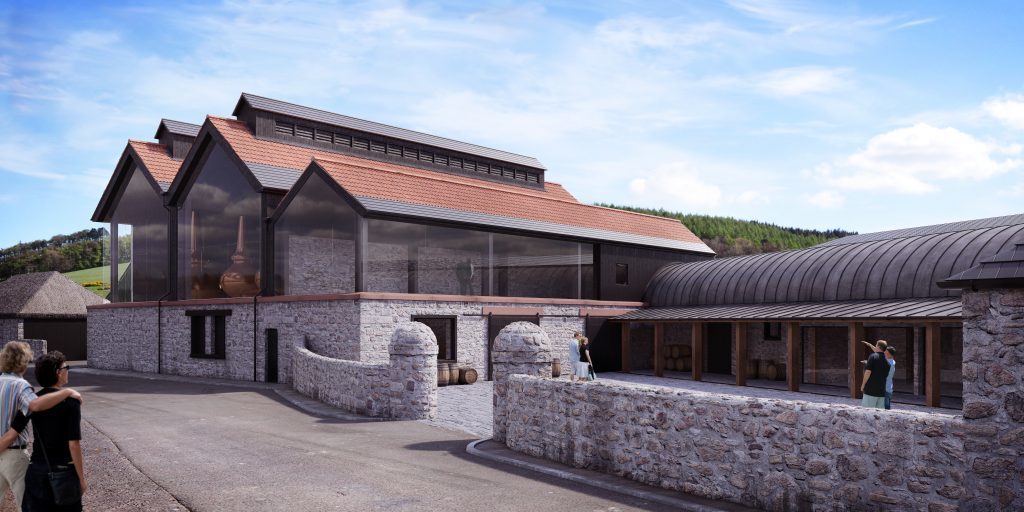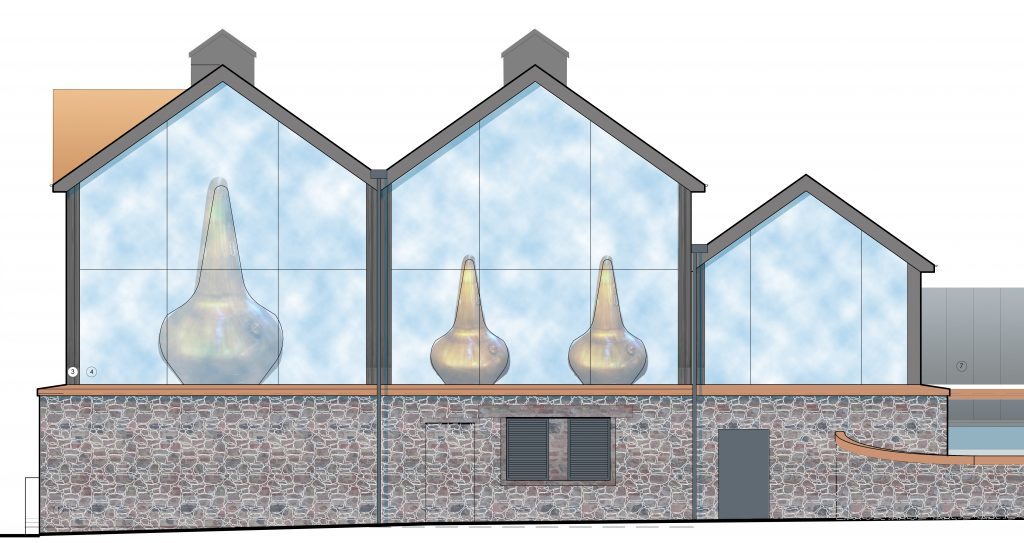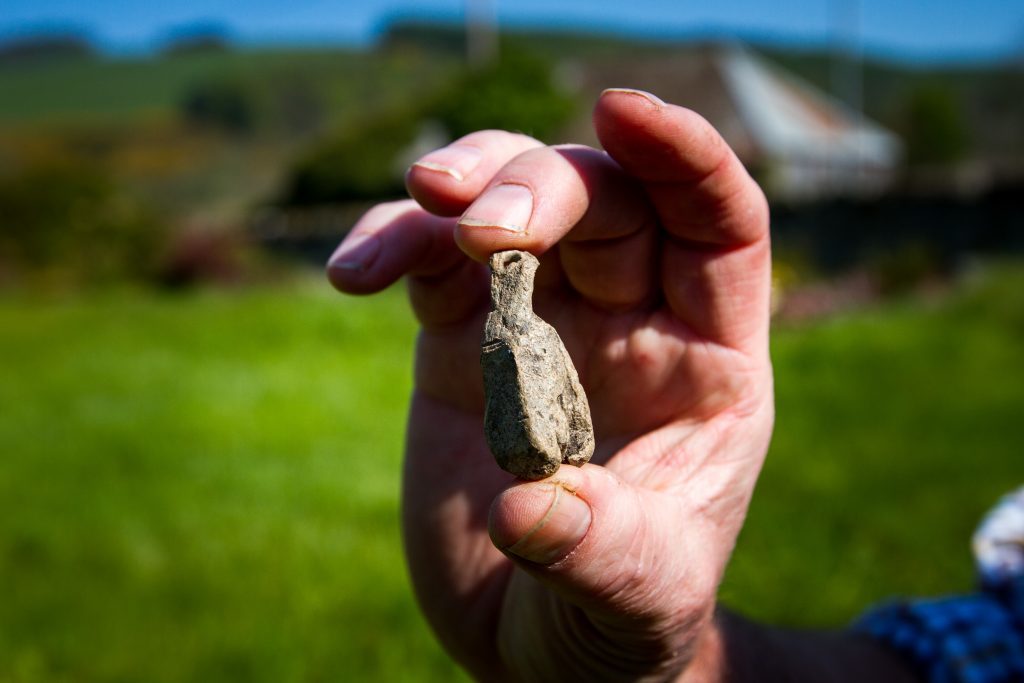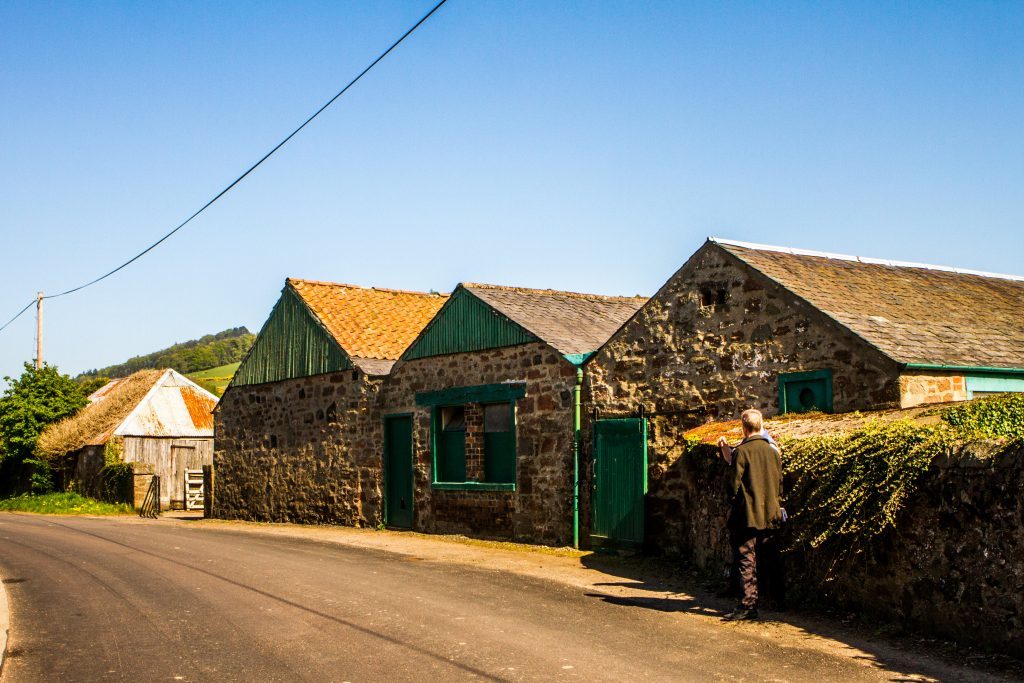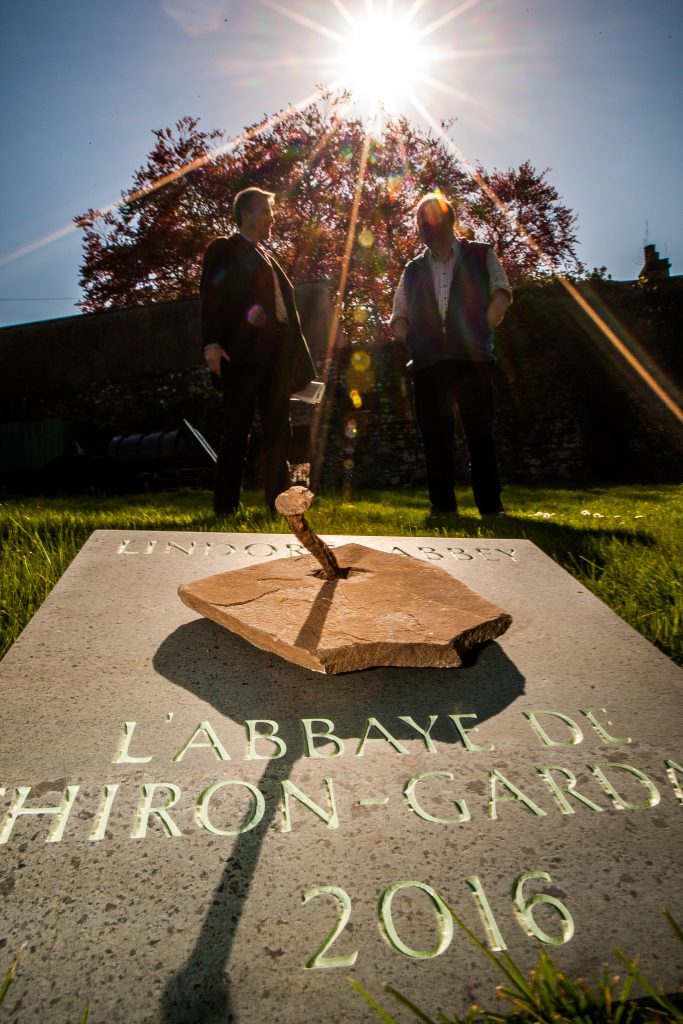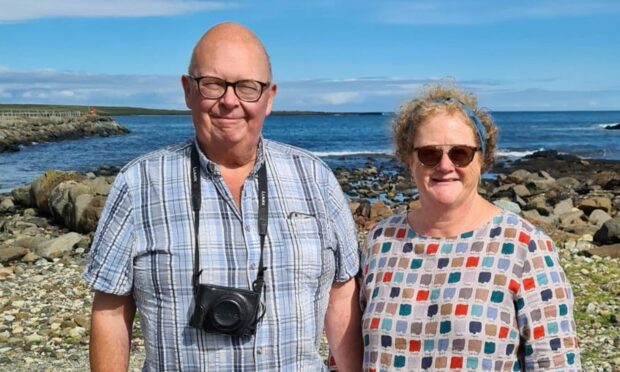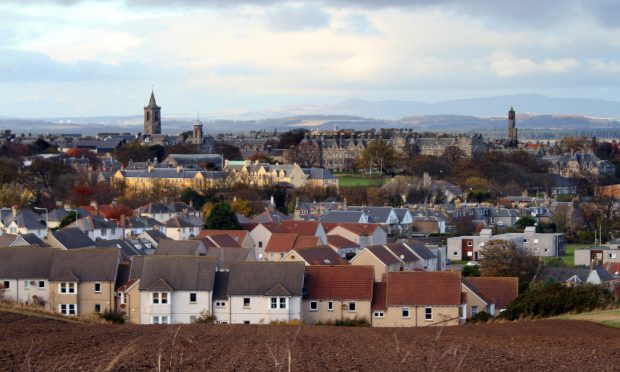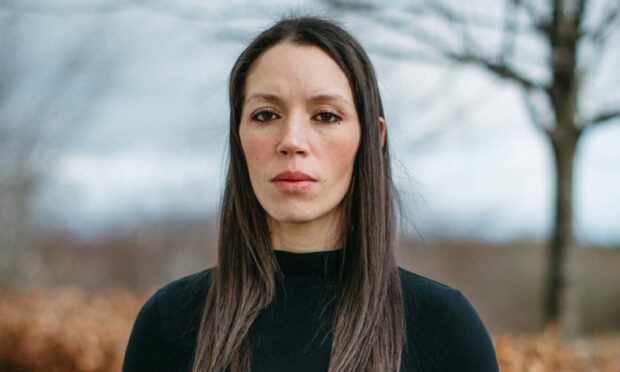A £10 million plan to revive production at the ‘spiritual home of Scotch whisky’ in north Fife has unearthed some exciting archaeological artefacts, discovers Michael Alexander.
Standing amid the ivy-clad ruins of Lindores Abbey in north Fife, it’s possible to imagine the day when in 1298 a battle-wearied William Wallace and his men strode through the east gate fresh from a skirmish with the Earl of Pembroke’s men at the nearby Battle of Blackearnside.
The ruins are also a visible reminder of the day Lindores Abbey, built in 1191, came to an end in 1559 when a rabble roused by John Knox’s distinctive brand of religious intolerance “overthrew the altars, broke up statues, burned the books and vestments and made them cast aside their monkish habits”.
The ruins that were left became known locally as “the wasteland”, their deterioration helped by their use as a quarry as nearby Newburgh expanded.
Yet a whole new exciting chapter in the history of this little known site is about the get under way with work set to begin on the construction of a £10 million distillery and visitor centre which will bring about its own rare form of historical continuity.
The abbey, regarded as the “spiritual home of Scotch whisky”, is the site of the first recorded whisky production in Scotland in 1494.
It was here that Friar John Cor distilled and paid duty on ‘aqua vitae’ – the water of life – for King James IV at Falkland Palace, a move that was recorded in the Exchequer roll and is the first written evidence of whisky distillation in Scotland.
Now with final funding agreements being signed imminently, it is envisaged that whisky distillation could resume opposite the historic building in around 18 months – with ambitions to attract up to 30,000 visitors per year from around the world.
Project leader Drew McKenzie Smith, 52, whose family has owned the land the abbey stands on for 103 years, was “not that aware” of the detailed history when he was younger.
It was his great great grandfather who bought Lindores Abbey House Farm in 1913, and as a child, Drew remembers his grandfather keeping cows within the overgrown ruins amongst which he would play.
It’s only around 20 years ago, however, that Drew and his wife discovered the true history of the site and only since then that the grounds around the privately owned scheduled ancient monument have been tamed.
“We didn’t know about the link with James IV until about 15 or 20 years ago, “says the entrepreneur who lives at Lindores Abbey House.
“In all the whisky books, websites and blogs, the first whisky Aqua Vitae was made centuries before then in illicit stills all round the world.
“But the Tironensian monks brought the distillation and horticultural skills over to Scotland from the Abbaye de la Sainte-Trinité de Tiron, near Chartres in France.
“The first written evidence of the proof of manufacture of Aqua Vitae is the exchequer rolls of 1494 – a tax roll reads ‘To Friar John Cor, by order of the King, VIII bolls of malt, wherewith to make acqua vitae [water of life, or uisge beatha in Gaelic].’
“Eight bolls of malt was enough barley to produce around 1,500 of today’s bottles of whisky.”
With consultation suggesting the wider Newburgh community is excited by the project and planning permission granted last September, conditions of approval included the digging of archaeological test pits on the proposed development site across the road from the abbey.
And as he gives The Courier a tour of the excavations, Drew reveals that archaeologists had been excited by the discovery of previously undiscovered foundations close to what was likely to have been the abbey’s old distillery and barns.
“In the building there are about 30 pits that were dug out. Fortunately there wasn’t anything there to be worried about – no bones or doubloons!” he laughs.
“And then they also had to do about 20 trenches outside with a JCB. The very first trench we dug unearthed this bit here, four inches below the surface, “he revealed, pointing at the exposed red sandstone structure.
“What they reckon is that over the other side of the road there was the first cloister. Obviously the road didn’t exist at that time. And over here, this was a secondary cloister.
“What we hope to be able to do is tidy up and leave this stonework exposed so that when we develop the distillery and visitor centre people will be able to see that.
“There would have been a garden inside this second cloister. This is also where the orchard would have been. So we want to restart the abbey orchards with historic strains of apples, plums and pears.
“Along there and across the burn on my cousin’s land, we also want to plant a more commercial orchard.
“When we’re up and running we’ll also be using local barley from the original abbey fields, literally within a stone’s throw of the abbey. It will be malted here, turned into whisky here and put in the warehouse here.”
“And the water will come from the “Holy Burn”, which was dug by the abbey’s monks to make whisky, meaning it is likely to bear at least some resemblance to the original whisky made more than 500 years ago.”
Drew said it would be easy to cash in on the history and turn the venture into a “mini Scottish Disney land”.
But he is keen for a quality spirit to prevail.
He adds: “You could argue with the USP of Friar John Cor, with William Wallace being up on the hill. We could turn it into a wee mini Scottish Disney land. But to me that’s a betrayal of Friar John Cor and the real history of it.
“The point of all that is that the spirit has got to be good enough to win blind tastings and things like that. And ultimately it has to be good enough to sell when it’s about five years old. And that’s the core purpose of the project.”
In this, the 750th anniversary year of Newburgh being declared a royal burgh, he is also keen for the distillery as it develops to “put something back into the community” with around 20 jobs set to be created on site and potential tourism spin offs from international visitors.
The V&A at Dundee could also boost visitor numbers to the area, he says.
At the time of this interview, Drew is about to head to France with his wife to present a specially mounted roof tile found at the Newburgh site to the mother Abbaye de la Sainte-Trinité de Tiron in France. They celebrated their 902nd anniversary on May 14.
“We have formed an allegiance. It is nice after all these centuries for these links to be honoured and restored.”
